
Antiguo: The Historic Heartbeat of San Sebastián
Discover Antiguo in San Sebastián: A blend of historic charm, scenic beauty, and vibrant local culture, nestled between Ondarreta Beach and Mount Igueldo.
Antiguo, nestled between the serene Ondarreta Beach and the verdant hills of Mount Igueldo, is one of San Sebastián’s most captivating neighborhoods. This area beautifully combines old-world charm with modern amenities, making it a perfect destination for tourists seeking an authentic Spanish experience. The neighborhood is home to the iconic Miramar Palace, a 19th-century royal residence with lush gardens offering panoramic views of the Bay of Biscay. Walking through Antiguo, you’ll find cobblestone streets lined with traditional Basque houses, each adorned with colorful flower boxes. The atmosphere is both relaxed and vibrant, with local markets, quaint cafes, and bustling pintxo bars where you can sample the region’s famous tapas. Antiguo's proximity to the beach makes it a haven for sunbathers and surfers alike. Ondarreta Beach is less crowded than the more famous La Concha, offering a tranquil spot to relax or enjoy water sports. For those seeking adventure, a funicular ride up Mount Igueldo provides breathtaking views and a visit to the charming amusement park at the summit. Whether you're a history buff, a foodie, or a nature lover, Antiguo offers something for everyone.
Local tips in Antiguo
- Visit Miramar Palace early in the morning to avoid crowds and enjoy the gardens in peace.
- Try the local pintxos at the bars along Matia Street for an authentic Basque culinary experience.
- Take the funicular to Mount Igueldo for stunning panoramic views of the city and the bay.
- Ondarreta Beach is less crowded than La Concha, making it perfect for a quieter beach day.
- Wear comfortable shoes as the neighborhood's cobblestone streets can be uneven.
Antiguo: The Historic Heartbeat of San Sebastián
Antiguo, nestled between the serene Ondarreta Beach and the verdant hills of Mount Igueldo, is one of San Sebastián’s most captivating neighborhoods. This area beautifully combines old-world charm with modern amenities, making it a perfect destination for tourists seeking an authentic Spanish experience. The neighborhood is home to the iconic Miramar Palace, a 19th-century royal residence with lush gardens offering panoramic views of the Bay of Biscay. Walking through Antiguo, you’ll find cobblestone streets lined with traditional Basque houses, each adorned with colorful flower boxes. The atmosphere is both relaxed and vibrant, with local markets, quaint cafes, and bustling pintxo bars where you can sample the region’s famous tapas. Antiguo's proximity to the beach makes it a haven for sunbathers and surfers alike. Ondarreta Beach is less crowded than the more famous La Concha, offering a tranquil spot to relax or enjoy water sports. For those seeking adventure, a funicular ride up Mount Igueldo provides breathtaking views and a visit to the charming amusement park at the summit. Whether you're a history buff, a foodie, or a nature lover, Antiguo offers something for everyone.
Iconic landmarks you can’t miss
Alderdi Eder parkea
Explore Alderdi Eder Park in San Sebastián for breathtaking views, lush gardens, and a tranquil atmosphere perfect for relaxation and cultural experiences.
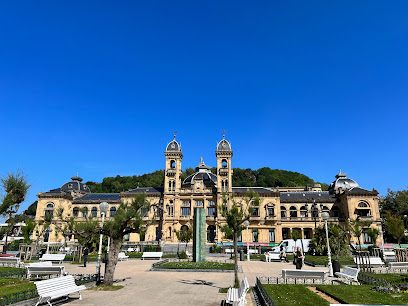
Comb of the Wind (Eduardo Chillida, 1976)
Discover the breathtaking Comb of the Wind in San Sebastián, a stunning sculpture by Eduardo Chillida that perfectly blends art and nature along the beautiful coastline.

Funicular Monte Igueldo
Experience breathtaking views and adventure at Funicular Monte Igueldo, a must-visit tourist attraction in Donostia-San Sebastián.

Gipuzkoa Plaza
Explore Gipuzkoa Plaza, a stunning park in Donostia-San Sebastián, where lush gardens and remarkable architecture create a perfect retreat for tourists.

Miramar Jauregia
Discover the beauty and history of Miramar Jauregia, a stunning convention center and park in Donostia-San Sebastián, offering breathtaking views and cultural experiences.

Good Shepherd of San Sebastián Cathedral
Explore the stunning Good Shepherd of San Sebastián Cathedral, a neo-Gothic masterpiece in the heart of Donostia-San Sebastián, rich in history and culture.
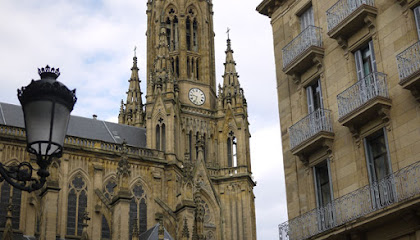
San Telmo Museum
Explore the Basque Country's heritage at San Telmo Museum, where history, art, and culture intertwine in a stunning former convent.

Igeldo mendiko behatokia
Experience stunning panoramic views and lush landscapes at Igeldo Mendiko Behatokia, the perfect scenic escape in San Sebastián.

Kontxa Pasealekua
Discover the enchanting beauty and rich history of Kontxa Pasealekua, a stunning promenade along La Concha Bay in Donostia-San Sebastián.
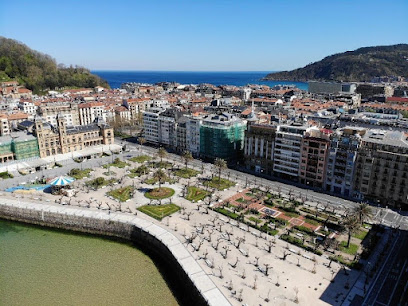
Motako Gaztelua
Discover the enchanting Motako Gaztelua, a historic castle in San Sebastián, offering stunning views and a glimpse into the Basque Country's rich heritage.

Koruko Andre Mariaren basilika
Explore the architectural beauty and spiritual essence of Koruko Andre Mariaren Basilika, a historic gem in San Sebastián's vibrant Old Town.
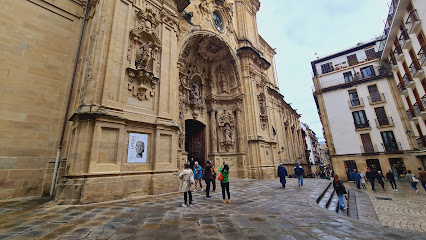
Plaza de la Constitucion
Explore the vibrant Plaza de la Constitución, a historical landmark and social hub in the heart of Donostia-San Sebastián, rich in culture and culinary delights.

Baluarte del Mirador
Experience breathtaking views and rich history at Baluarte del Mirador, a must-visit observation deck in Donostia-San Sebastián, Spain.

Monte Urgull
Experience breathtaking views and rich history at Monte Urgull, the iconic observation deck overlooking the stunning San Sebastián coastline.

Loretopea
Explore the scenic beauty and rich history of Loretopea, a captivating destination in the heart of Donostia-San Sebastián with stunning views and lush gardens.

Unmissable attractions to see
Alderdi Eder parkea
Discover the serene beauty of Alderdi Eder Park, a lush green oasis in the heart of San Sebastián, perfect for relaxation and cultural exploration.

Comb of the Wind (Eduardo Chillida, 1976)
Discover the captivating art and natural beauty at the Comb of the Wind, a stunning sculpture by Eduardo Chillida in San Sebastián.

Aquarium
Explore the marine wonders at San Sebastián Aquarium, where education meets conservation in a breathtaking coastal setting.

Funicular Monte Igueldo
Discover breathtaking views and rich history at the Funicular Monte Igueldo, a must-visit tourist attraction in Donostia-San Sebastián.

Gipuzkoa Plaza
Explore Gipuzkoa Plaza in Donostia-San Sebastian, a beautiful park offering tranquility, vibrant culture, and a perfect spot to relax amid stunning landscapes.

Miramar Jauregia
Explore the historical beauty of Miramar Jauregia, a serene park and convention center in Donostia-San Sebastian with breathtaking views of La Concha Bay.

Good Shepherd of San Sebastián Cathedral
Explore the breathtaking beauty of Good Shepherd of San Sebastián Cathedral, a neo-Gothic masterpiece in the heart of the city, rich in history and artistry.

Cristina Enea parkea
Discover the serene beauty of Cristina Enea Park, a historic green oasis in Donostia-San Sebastián, perfect for relaxation and nature exploration.

San Telmo Museum
Explore the rich cultural heritage and artistic legacy of the Basque Country at the San Telmo Museum in Donostia-San Sebastián.

Igeldo mendiko behatokia
Experience stunning panoramic views of San Sebastián from Igeldo Mountain Lookout, a serene park perfect for nature lovers and adventure seekers alike.

Aiete parkea
Discover Aiete Park, a serene and picturesque green space in Donostia-San Sebastián, perfect for relaxation and cultural exploration amid nature's beauty.
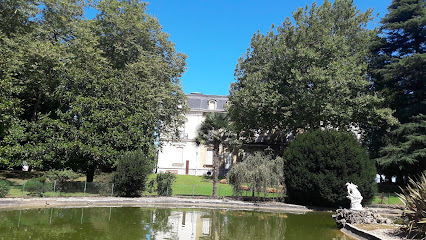
Kontxa Pasealekua
Explore the picturesque Kontxa Pasealekua promenade in Donostia-San Sebastián, where stunning views, rich history, and vibrant culture come together along the Basque coast.

Motako Gaztelua
Discover the historic charm and breathtaking views of Motako Gaztelua, a medieval castle in Donostia-San Sebastián.

Koruko Andre Mariaren basilika
Explore the architectural beauty and spiritual heritage of Koruko Andre Mariaren Basilika in San Sebastián, a must-visit cultural gem in the Basque Country.

Plaza de la Constitucion
Discover the vibrant atmosphere and rich history of Plaza de la Constitucion in Donostia-San Sebastian, a cultural gem in the Basque Country.
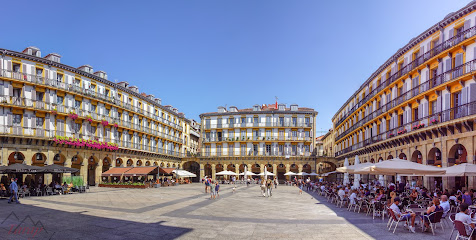
Essential places to dine
TrikuHarri Taberna Jatetxea
Experience authentic Basque flavors at TrikuHarri Taberna Jatetxea – where grilled perfection meets local tradition.

Bar Hemen
Experience authentic Basque flavors at Bar Hemen, where every pintxo tells a story in the heart of Donostia-San Sebastian.

Abakando
Experience the best of Basque cuisine at Abakando, where fresh seafood meets Mediterranean flavors in a vibrant setting.

La Rebotika (Brasa Bar&Denda)
Experience the flavors of Basque cuisine at La Rebotika, a lively brasserie and bar in Donostia-San Sebastián offering delicious grilled dishes.

Caffè Bar Malandrino
Experience authentic Italian cuisine at Caffè Bar Malandrino in Donostia—where every pizza tells a story.

Oliyos
Experience authentic Basque flavors at Oliyos in Donostia-San Sebastian - where culinary tradition meets modern flair.

Duit Wine & Bistro
Experience exquisite Basque cuisine paired with fine wines at Duit Wine & Bistro in Donostia-San Sebastian.

orburu
Experience innovative vegetarian cuisine at Orburu Taberna in Donostia-San Sebastian, where every dish is crafted with local ingredients and creativity.

Restaurante Kukuarri NH Collection Aránzazu
Savor exquisite Basque cuisine at Restaurante Kukuarri, where fine dining meets elegance in Donostia-San Sebastián.

ANTIGUA jatetxea
Experience authentic Basque flavors at ANTIGUA Jatetxea in Donostia-San Sebastian - where grilled perfection meets inviting ambiance.
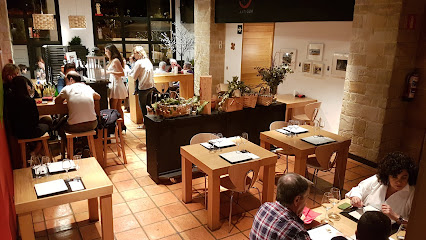
Markets, malls and hidden boutiques
La Petite
Explore La Petite in Donostia-San Sebastian for a curated selection of chic clothing and accessories reflecting the vibrant local style.

Keala By Beatriz Armendariz
Explore the exquisite collection of dresses at Keala By Beatriz Armendariz, where fashion meets the vibrant culture of Donostia-San Sebastian.

The Bohemian Shop
Explore the charm of vintage fashion at The Bohemian Shop in Donostia-San Sebastian, where each piece tells a unique story.

Petit Comité
Explore Petit Comité in Donostia-San Sebastian for a unique selection of stylish women's clothing reflecting contemporary Basque fashion.

TOME SAN SEBASTIAN - Moda, calzado y complementos
Explore the vibrant youth fashion scene at TOME SAN SEBASTIAN, where modern trends and stylish accessories come together in Donostia.

OCRE
Discover OCRE in Donostia-San Sebastian, where trendy clothing and stylish shoes meet the vibrant local fashion scene.

REGALOS CLARA
Explore Regal Clara for unique gifts and stylish accessories in Donostia-San Sebastian's charming boutique scene.

Punto 23
Explore unique women's fashion at Punto 23 in Donostia-San Sebastián, where style and quality intertwine for an unforgettable shopping experience.
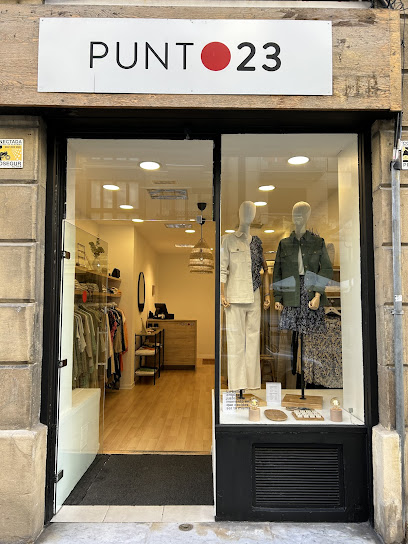
tamarindoSS
Explore unique fashion at Tamarindo, a stylish women's clothing store in San Sebastián's vibrant shopping district.

Manami Boutique by MA
Explore Manami Boutique in Donostia-San Sebastián for unique fashion pieces that blend local culture and contemporary style in a charming setting.

Essential bars & hidden hideouts
Pepe Taberna Garagardotegia
Discover the vibrant culinary scene at Pepe Taberna Garagardotegia, where traditional tapas meet a lively atmosphere in the heart of San Sebastián.
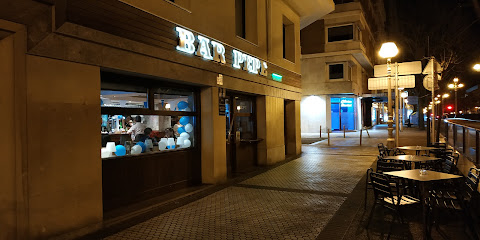
TrikuHarri Taberna Jatetxea
Experience authentic Basque cuisine at TrikuHarri Taberna Jatetxea, a grill restaurant in Donostia-San Sebastian, where flavor meets tradition.

La Cervecería del Antiguo
Experience the vibrant culture of Donostia-San Sebastian at La Cervecería del Antiguo, where local beers and delicious tapas await in a lively atmosphere.

Bar Hemen
Discover the vibrant flavors of Donostia-San Sebastian at Bar Hemen, where authentic tapas and a lively atmosphere await you.

Mandragora
Discover the vibrant atmosphere of Mandragora, a local bar in San Sebastián offering craft beers, cocktails, and delicious tapas.

Mogambo taberna
Discover the vibrant flavors of Spain at Mogambo Taberna, a lively tapas bar in the heart of Donostia-San Sebastian.

BENTA BERRI BAR
Experience authentic Basque flavors at Benta Berri Bar in Donostia-San Sebastian, where the atmosphere is vibrant and the pintxos are divine.

El Almacén Wine Bar
Explore the exquisite flavors of El Almacén Wine Bar in San Sebastián, where exceptional wines and delicious tapas create an unforgettable experience.

Bar Xerpa
Discover the essence of Basque cuisine at Bar Xerpa, a vibrant tapas bar in the heart of Donostia-San Sebastián.
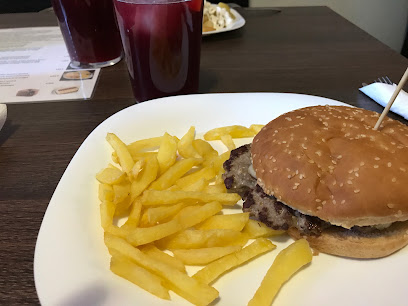
Belle Epoque Wine Bistro Bar
Discover the elegance of Belle Epoque Wine Bistro Bar in Donostia-San Sebastian, where exquisite wines and gourmet tapas come together in a charming atmosphere.

Local Phrases
-
- HelloHola
[oh-lah] - GoodbyeAdiós
[ah-dee-ohs] - YesSí
[see] - NoNo
[noh] - Please/You're welcomePor favor/De nada
[por fah-bor/deh nah-dah] - Thank youGracias
[grah-see-ahs] - Excuse me/SorryPerdón/Lo siento
[pehr-dohn/loh see-ehn-toh] - How are you?¿Cómo estás?
[koh-moh ehs-tahs] - Fine. And you?Bien. ¿Y tú?
[byen. ee too] - Do you speak English?¿Hablas inglés?
[ah-blahs een-glehs] - I don't understandNo entiendo
[noh ehn-tee-ehn-doh]
- HelloHola
-
- I'd like to see the menu, pleaseMe gustaría ver la carta, por favor
[meh goos-tah-ree-ah behr lah kahr-tah, por fah-bor] - I don't eat meatNo como carne
[noh koh-moh kahr-neh] - Cheers!¡Salud!
[sah-lood] - I would like to pay, pleaseMe gustaría pagar, por favor
[meh goos-tah-ree-ah pah-gahr, por fah-bor]
- I'd like to see the menu, pleaseMe gustaría ver la carta, por favor
-
- Help!¡Ayuda!
[ah-yoo-dah] - Go away!¡Vete!
[veh-teh] - Call the Police!¡Llama a la Policía!
[yah-mah ah lah poh-lee-see-ah] - Call a doctor!¡Llama a un médico!
[yah-mah ah oon meh-dee-koh] - I'm lostEstoy perdido/a
[ehs-toy pehr-dee-doh/dah] - I'm illEstoy enfermo/a
[ehs-toy ehn-fehr-moh/dah]
- Help!¡Ayuda!
-
- I'd like to buy...Me gustaría comprar...
[meh goos-tah-ree-ah kohm-prahr] - I'm just lookingSolo estoy mirando
[soh-loh ehs-toy mee-rahn-doh] - How much is it?¿Cuánto cuesta?
[kwan-toh kwehs-tah] - That's too expensiveEs demasiado caro
[ehs deh-mah-syah-doh kahr-oh] - Can you lower the price?¿Puede bajar el precio?
[pweh-deh bah-hahr ehl pree-syoh]
- I'd like to buy...Me gustaría comprar...
-
- What time is it?¿Qué hora es?
[keh oh-rah ehs] - It's one o'clockEs la una
[ehs lah oo-nah] - Half past (10)Y media (10)
[ee meh-dee-ah (deh-eez)] - MorningMañana
[mah-nyah-nah] - AfternoonTarde
[tahr-deh] - EveningNoche
[noh-cheh] - YesterdayAyer
[ah-yehr] - TodayHoy
[oy] - TomorrowMañana
[mah-nyah-nah] - 1Uno
[oo-noh] - 2Dos
[dohs] - 3Tres
[trehs] - 4Cuatro
[kooah-troh] - 5Cinco
[theen-koh] - 6Seis
[sehs] - 7Siete
[syeh-teh] - 8Ocho
[oh-choh] - 9Nueve
[nweh-veh] - 10Diez
[dyehs]
- What time is it?¿Qué hora es?
-
- Where's a/the...?¿Dónde está...?
[dohn-deh ehs-tah] - What's the address?¿Cuál es la dirección?
[kwal ehs lah dee-rehk-syon] - Can you show me (on the map)?¿Puede enseñarme (en el mapa)?
[pweh-deh ehn-seh-nyar-meh (ehn ehl mah-pah)] - When's the next (bus)?¿Cuándo es el próximo (autobús)?
[kwan-doh ehs ehl prohk-see-moh (ow-toh-boos)] - A ticket (to ....)Un billete (a ....)
[oon bee-yeh-teh (ah)]
- Where's a/the...?¿Dónde está...?
History of Antiguo
-
The Antiguo neighborhood, situated to the west of the city center of San Sebastián, has its origins dating back to the early establishment of the city. The area was originally a farming community that gradually transformed as San Sebastián expanded in the late 19th century. Its name, meaning 'old' in Spanish, reflects its historical significance as one of the earliest populated areas of the city.
-
During the 19th century, Antiguo began to experience rapid growth due to the influx of people seeking opportunities in the burgeoning port city of San Sebastián. The construction of the railway in the 1860s further connected Antiguo to other regions, enhancing trade and mobility. This era also saw the establishment of residential areas and local businesses, marking a pivotal transformation in the neighborhood's landscape.
-
The late 19th and early 20th centuries brought significant cultural developments to Antiguo. The establishment of the 'Colegio San Ignacio' in 1880 marked the beginning of a focus on education within the community. The neighborhood became a center for various cultural activities, including music and arts, contributing to the rich cultural tapestry of San Sebastián.
-
The early 20th century witnessed the influence of the Modernist architectural movement in Antiguo. Notable architects, such as José Manuel Aizpurua, designed several iconic buildings that reflect this style, integrating innovative designs with the natural landscape. This architectural heritage is still evident in the neighborhood today, enhancing its historical charm.
-
The Spanish Civil War (1936-1939) had a profound impact on Antiguo, as in the rest of San Sebastián. The neighborhood became a refuge for many fleeing from conflict. It was during this time that various buildings were repurposed for wartime needs, which left an indelible mark on the community's identity and resilience.
-
After the war, Antiguo underwent significant urban development to accommodate the growing population and modern needs. The construction of new housing complexes and public spaces in the 1950s and 1960s transformed the neighborhood into a vibrant residential area, while also preserving its historical character.
-
Today, Antiguo is known for its lively atmosphere that combines traditional Basque culture with contemporary influences. The annual 'Antiguo Fest' showcases local traditions, gastronomy, and performances, celebrating the neighborhood's rich heritage. Additionally, the presence of various cultural institutions and local markets reflects the dynamic community life that continues to thrive in Antiguo.
Antiguo Essentials
-
Antiguo is easily accessible from other neighborhoods in San Sebastián. If you are coming from the city center, you can take the number 16 or 24 bus, which runs frequently throughout the day. The journey takes approximately 15-20 minutes. For those arriving from the train station, it is best to take a taxi or use the bus services that connect to Antiguo.
-
Antiguo is a pedestrian-friendly neighborhood, making it easy to explore on foot. The local bus service (Dbus) connects Antiguo to other parts of the city, with several stops located throughout the area. Bicycles can also be rented from local shops, and there are dedicated bike lanes for a safe ride. Taxis are available and can be called easily if needed.
-
Antiguo is generally a safe neighborhood for tourists, but it is wise to remain vigilant, especially in crowded areas. Petty crimes such as pickpocketing can occur, particularly near popular attractions or during local events. It's advisable to avoid dimly lit areas at night and to stay alert in busy areas such as the La Concha beach promenade.
-
In case of an emergency, dial 112 for police, fire, or medical assistance. Local hospitals and clinics are available, and it's advisable to have travel insurance that includes medical coverage. Pharmacies are widely available in Antiguo for non-emergency health issues.
-
Fashion: Do wear comfortable clothing and shoes for walking. Don't wear swimwear outside of the beach areas. Religion: Do respect local customs, especially when visiting churches. Public Transport: Do be courteous to fellow passengers. Don’t play loud music or disturb others. Greetings: Do greet locals with a friendly 'Hola' and a smile. Eating & Drinking: Do try the pintxos at local bars. Don’t ask for alterations to traditional dishes.
-
To experience Antiguo like a local, visit the local markets and try fresh produce and local specialties. Engage with the locals, who are generally friendly and willing to share insights about the culture. Explore the nearby Ondarreta beach, perfect for a relaxing afternoon, and don’t miss the iconic Peine del Viento sculpture by Eduardo Chillida, which offers stunning views of the ocean.
Trending Landmarks in Antiguo
-
Alderdi Eder parkea
-
Comb of the Wind (Eduardo Chillida, 1976)
-
Funicular Monte Igueldo
-
Gipuzkoa Plaza
-
Miramar Jauregia
-
Good Shepherd of San Sebastián Cathedral
-
San Telmo Museum
-
Igeldo mendiko behatokia
-
Kontxa Pasealekua
-
Motako Gaztelua
-
Koruko Andre Mariaren basilika
-
Plaza de la Constitucion
-
Baluarte del Mirador
-
Monte Urgull
-
Loretopea
Nearby Cities to Antiguo
-
Things To Do in Pamplona
-
Things To Do in Bilbao
-
Things To Do in Santander
-
Things To Do in Lourdes
-
Things To Do in Burgos
-
Things To Do in Huesca
-
Things To Do in Bordeaux
-
Things To Do in Zaragoza
-
Things To Do in Toulouse
-
Things To Do in Lleida
-
Things To Do in Valladolid
-
Things To Do in Arinsal
-
Things To Do in El Serrat
-
Things To Do in La Massana
-
Things To Do in Ordino








